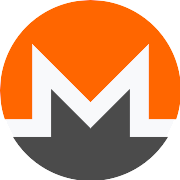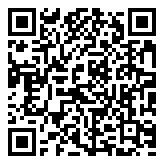The Complete Monero Timeline
 Tip SamBent
Tip SamBent  41sambentY6c3hfwicDEcLhydSgCPuYtrivXPBHnBBvHMaQaTBbca2PQ6oSGfijaiMSrfBjkGUNwy96QvE3f6nk7D5L1jvY
41sambentY6c3hfwicDEcLhydSgCPuYtrivXPBHnBBvHMaQaTBbca2PQ6oSGfijaiMSrfBjkGUNwy96QvE3f6nk7D5L1jvY
 Publish Tip to SamBent
Publish Tip to SamBent Please login to publish your tip
 Tip SamBent
Tip SamBent  41sambentY6c3hfwicDEcLhydSgCPuYtrivXPBHnBBvHMaQaTBbca2PQ6oSGfijaiMSrfBjkGUNwy96QvE3f6nk7D5L1jvY
41sambentY6c3hfwicDEcLhydSgCPuYtrivXPBHnBBvHMaQaTBbca2PQ6oSGfijaiMSrfBjkGUNwy96QvE3f6nk7D5L1jvY
 Publish Tip to SamBent
Publish Tip to SamBent Please login to publish your tip
 Tip SamBent
Tip SamBent  41sambentY6c3hfwicDEcLhydSgCPuYtrivXPBHnBBvHMaQaTBbca2PQ6oSGfijaiMSrfBjkGUNwy96QvE3f6nk7D5L1jvY
41sambentY6c3hfwicDEcLhydSgCPuYtrivXPBHnBBvHMaQaTBbca2PQ6oSGfijaiMSrfBjkGUNwy96QvE3f6nk7D5L1jvY
 Publish Tip to SamBent
Publish Tip to SamBent Please login to publish your tip
 Tip SamBent
Tip SamBent  41sambentY6c3hfwicDEcLhydSgCPuYtrivXPBHnBBvHMaQaTBbca2PQ6oSGfijaiMSrfBjkGUNwy96QvE3f6nk7D5L1jvY
41sambentY6c3hfwicDEcLhydSgCPuYtrivXPBHnBBvHMaQaTBbca2PQ6oSGfijaiMSrfBjkGUNwy96QvE3f6nk7D5L1jvY
 Publish Tip to SamBent
Publish Tip to SamBent Please login to publish your tip
 Tip SamBent
Tip SamBent  41sambentY6c3hfwicDEcLhydSgCPuYtrivXPBHnBBvHMaQaTBbca2PQ6oSGfijaiMSrfBjkGUNwy96QvE3f6nk7D5L1jvY
41sambentY6c3hfwicDEcLhydSgCPuYtrivXPBHnBBvHMaQaTBbca2PQ6oSGfijaiMSrfBjkGUNwy96QvE3f6nk7D5L1jvY
 Publish Tip to SamBent
Publish Tip to SamBent Please login to publish your tip
 Tip SamBent
Tip SamBent  41sambentY6c3hfwicDEcLhydSgCPuYtrivXPBHnBBvHMaQaTBbca2PQ6oSGfijaiMSrfBjkGUNwy96QvE3f6nk7D5L1jvY
41sambentY6c3hfwicDEcLhydSgCPuYtrivXPBHnBBvHMaQaTBbca2PQ6oSGfijaiMSrfBjkGUNwy96QvE3f6nk7D5L1jvY
 Publish Tip to SamBent
Publish Tip to SamBent Please login to publish your tip
 Tip SamBent
Tip SamBent  41sambentY6c3hfwicDEcLhydSgCPuYtrivXPBHnBBvHMaQaTBbca2PQ6oSGfijaiMSrfBjkGUNwy96QvE3f6nk7D5L1jvY
41sambentY6c3hfwicDEcLhydSgCPuYtrivXPBHnBBvHMaQaTBbca2PQ6oSGfijaiMSrfBjkGUNwy96QvE3f6nk7D5L1jvY
 Publish Tip to SamBent
Publish Tip to SamBent Please login to publish your tip
 Tip SamBent
Tip SamBent  41sambentY6c3hfwicDEcLhydSgCPuYtrivXPBHnBBvHMaQaTBbca2PQ6oSGfijaiMSrfBjkGUNwy96QvE3f6nk7D5L1jvY
41sambentY6c3hfwicDEcLhydSgCPuYtrivXPBHnBBvHMaQaTBbca2PQ6oSGfijaiMSrfBjkGUNwy96QvE3f6nk7D5L1jvY
 Publish Tip to SamBent
Publish Tip to SamBent Please login to publish your tip
 Tip SamBent
Tip SamBent  41sambentY6c3hfwicDEcLhydSgCPuYtrivXPBHnBBvHMaQaTBbca2PQ6oSGfijaiMSrfBjkGUNwy96QvE3f6nk7D5L1jvY
41sambentY6c3hfwicDEcLhydSgCPuYtrivXPBHnBBvHMaQaTBbca2PQ6oSGfijaiMSrfBjkGUNwy96QvE3f6nk7D5L1jvY
 Publish Tip to SamBent
Publish Tip to SamBent Please login to publish your tip
 Tip SamBent
Tip SamBent  41sambentY6c3hfwicDEcLhydSgCPuYtrivXPBHnBBvHMaQaTBbca2PQ6oSGfijaiMSrfBjkGUNwy96QvE3f6nk7D5L1jvY
41sambentY6c3hfwicDEcLhydSgCPuYtrivXPBHnBBvHMaQaTBbca2PQ6oSGfijaiMSrfBjkGUNwy96QvE3f6nk7D5L1jvY
 Publish Tip to SamBent
Publish Tip to SamBent Please login to publish your tip
 Tip SamBent
Tip SamBent  41sambentY6c3hfwicDEcLhydSgCPuYtrivXPBHnBBvHMaQaTBbca2PQ6oSGfijaiMSrfBjkGUNwy96QvE3f6nk7D5L1jvY
41sambentY6c3hfwicDEcLhydSgCPuYtrivXPBHnBBvHMaQaTBbca2PQ6oSGfijaiMSrfBjkGUNwy96QvE3f6nk7D5L1jvY
 Publish Tip to SamBent
Publish Tip to SamBent Please login to publish your tip
 Tip SamBent
Tip SamBent  41sambentY6c3hfwicDEcLhydSgCPuYtrivXPBHnBBvHMaQaTBbca2PQ6oSGfijaiMSrfBjkGUNwy96QvE3f6nk7D5L1jvY
41sambentY6c3hfwicDEcLhydSgCPuYtrivXPBHnBBvHMaQaTBbca2PQ6oSGfijaiMSrfBjkGUNwy96QvE3f6nk7D5L1jvY
 Publish Tip to SamBent
Publish Tip to SamBent Please login to publish your tip
 Tip SamBent
Tip SamBent  41sambentY6c3hfwicDEcLhydSgCPuYtrivXPBHnBBvHMaQaTBbca2PQ6oSGfijaiMSrfBjkGUNwy96QvE3f6nk7D5L1jvY
41sambentY6c3hfwicDEcLhydSgCPuYtrivXPBHnBBvHMaQaTBbca2PQ6oSGfijaiMSrfBjkGUNwy96QvE3f6nk7D5L1jvY
 Publish Tip to SamBent
Publish Tip to SamBent Please login to publish your tip
 Tip SamBent
Tip SamBent  41sambentY6c3hfwicDEcLhydSgCPuYtrivXPBHnBBvHMaQaTBbca2PQ6oSGfijaiMSrfBjkGUNwy96QvE3f6nk7D5L1jvY
41sambentY6c3hfwicDEcLhydSgCPuYtrivXPBHnBBvHMaQaTBbca2PQ6oSGfijaiMSrfBjkGUNwy96QvE3f6nk7D5L1jvY
 Publish Tip to SamBent
Publish Tip to SamBent Please login to publish your tip
 Tip SamBent
Tip SamBent  41sambentY6c3hfwicDEcLhydSgCPuYtrivXPBHnBBvHMaQaTBbca2PQ6oSGfijaiMSrfBjkGUNwy96QvE3f6nk7D5L1jvY
41sambentY6c3hfwicDEcLhydSgCPuYtrivXPBHnBBvHMaQaTBbca2PQ6oSGfijaiMSrfBjkGUNwy96QvE3f6nk7D5L1jvY
 Publish Tip to SamBent
Publish Tip to SamBent Please login to publish your tip
 Tip SamBent
Tip SamBent  41sambentY6c3hfwicDEcLhydSgCPuYtrivXPBHnBBvHMaQaTBbca2PQ6oSGfijaiMSrfBjkGUNwy96QvE3f6nk7D5L1jvY
41sambentY6c3hfwicDEcLhydSgCPuYtrivXPBHnBBvHMaQaTBbca2PQ6oSGfijaiMSrfBjkGUNwy96QvE3f6nk7D5L1jvY
 Publish Tip to SamBent
Publish Tip to SamBent Please login to publish your tip
 Tip SamBent
Tip SamBent  41sambentY6c3hfwicDEcLhydSgCPuYtrivXPBHnBBvHMaQaTBbca2PQ6oSGfijaiMSrfBjkGUNwy96QvE3f6nk7D5L1jvY
41sambentY6c3hfwicDEcLhydSgCPuYtrivXPBHnBBvHMaQaTBbca2PQ6oSGfijaiMSrfBjkGUNwy96QvE3f6nk7D5L1jvY
 Publish Tip to SamBent
Publish Tip to SamBent Please login to publish your tip
 Tip SamBent
Tip SamBent  41sambentY6c3hfwicDEcLhydSgCPuYtrivXPBHnBBvHMaQaTBbca2PQ6oSGfijaiMSrfBjkGUNwy96QvE3f6nk7D5L1jvY
41sambentY6c3hfwicDEcLhydSgCPuYtrivXPBHnBBvHMaQaTBbca2PQ6oSGfijaiMSrfBjkGUNwy96QvE3f6nk7D5L1jvY
 Publish Tip to SamBent
Publish Tip to SamBent Please login to publish your tip
 Tip SamBent
Tip SamBent  41sambentY6c3hfwicDEcLhydSgCPuYtrivXPBHnBBvHMaQaTBbca2PQ6oSGfijaiMSrfBjkGUNwy96QvE3f6nk7D5L1jvY
41sambentY6c3hfwicDEcLhydSgCPuYtrivXPBHnBBvHMaQaTBbca2PQ6oSGfijaiMSrfBjkGUNwy96QvE3f6nk7D5L1jvY
 Publish Tip to SamBent
Publish Tip to SamBent Please login to publish your tip
 Tip SamBent
Tip SamBent  41sambentY6c3hfwicDEcLhydSgCPuYtrivXPBHnBBvHMaQaTBbca2PQ6oSGfijaiMSrfBjkGUNwy96QvE3f6nk7D5L1jvY
41sambentY6c3hfwicDEcLhydSgCPuYtrivXPBHnBBvHMaQaTBbca2PQ6oSGfijaiMSrfBjkGUNwy96QvE3f6nk7D5L1jvY
 Publish Tip to SamBent
Publish Tip to SamBent Please login to publish your tip











